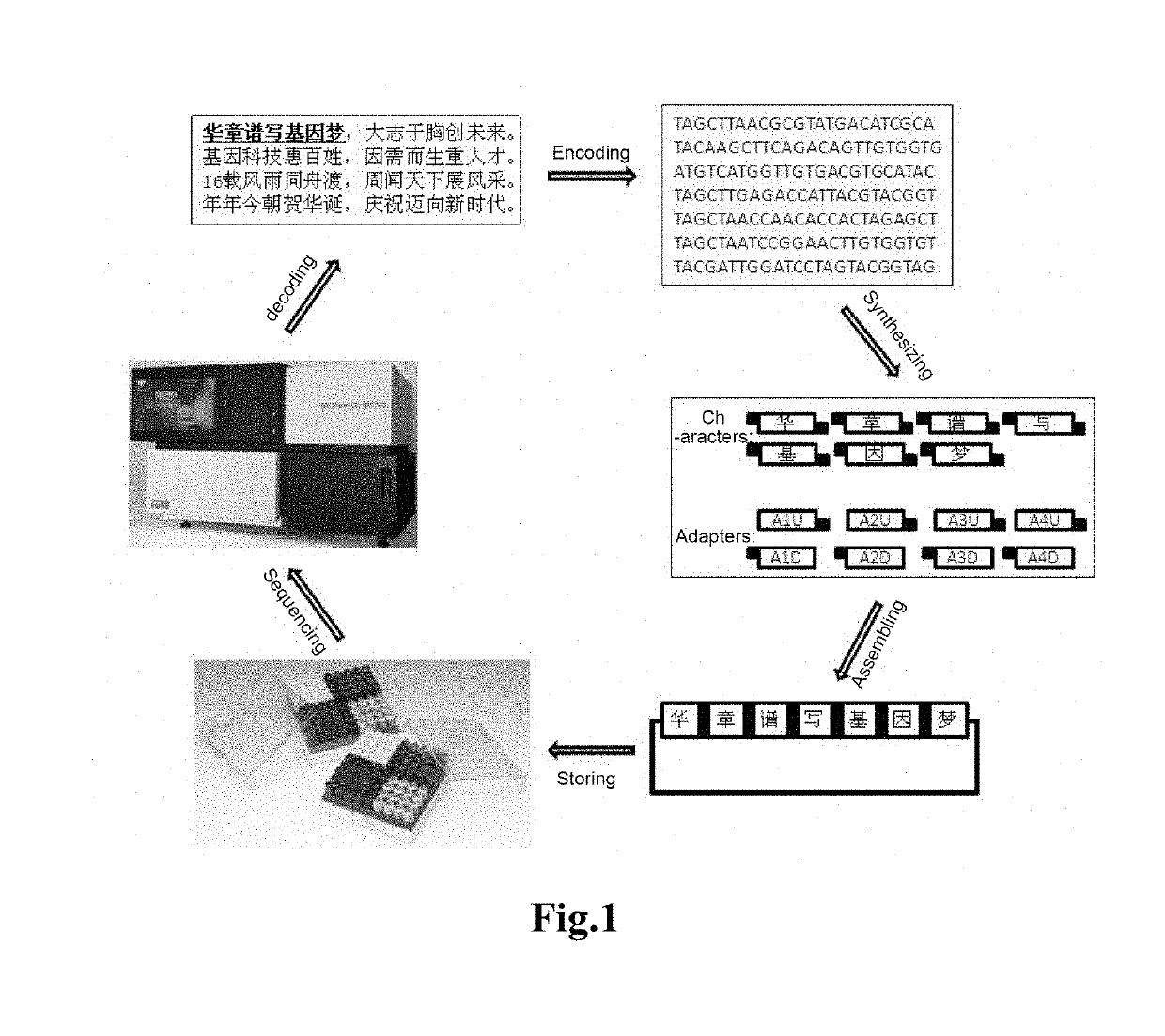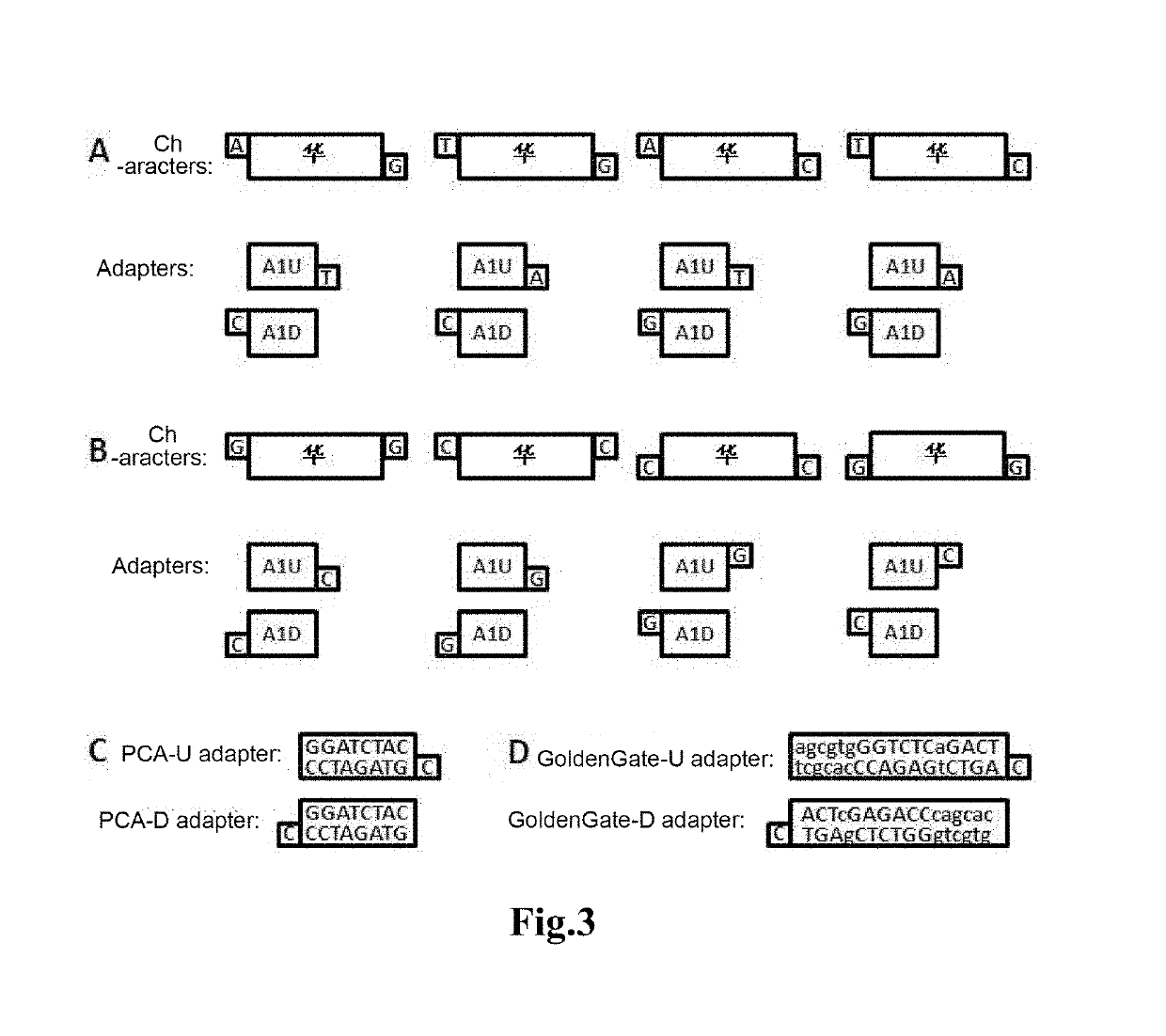Method for using DNA to store text information, decoding method therefor and application thereof
a text information and dna technology, applied in the field of dnabased storage, can solve the problems of data storage problems all over the world, large amount of valid data being lost, and the amount of global data still growing rapidly, so as to achieve the effect of convenient and efficient storag
- Summary
- Abstract
- Description
- Claims
- Application Information
AI Technical Summary
Benefits of technology
Problems solved by technology
Method used
Image
Examples
example 1
Assembly Test
[0045]The phrase for the assembly test: .
[0046]Transcoding was performed according to the method of the present invention and DNA oligo sequences were synthesized; the PCA adapters were used for locating and ligating according to G / C and A / T base pairing manner at the upstream and downstream, respectively. The DNA oligo and primer sequences were shown in Table 1 below.
[0047]1. Annealing
[0048]The forward and reverse oligos were each taken 10 μL for each character or adapter, mixed and annealed; the annealing procedure was: denatured at 99° C. for 10 min, slowly cooled to 25° C. at 0.1° C. / sec, maintained at 12° C.
[0049]2. Ligation
[0050]To each character were added upstream and downstream adapters in order respectively for ligation; the ligation system was: 1 μL of T4 DNA ligase (Enzymatics), 10 μL of 2×ligation buffer, 2 μL each of the annealed character, upstream adapter and downstream adapter, 3 μL of ddH2O; ligating at 16° C. overnight.
[0051]3. Purification of the Lig...
PUM
| Property | Measurement | Unit |
|---|---|---|
| Fraction | aaaaa | aaaaa |
| Fraction | aaaaa | aaaaa |
| Secondary structure | aaaaa | aaaaa |
Abstract
Description
Claims
Application Information
 Login to View More
Login to View More - R&D
- Intellectual Property
- Life Sciences
- Materials
- Tech Scout
- Unparalleled Data Quality
- Higher Quality Content
- 60% Fewer Hallucinations
Browse by: Latest US Patents, China's latest patents, Technical Efficacy Thesaurus, Application Domain, Technology Topic, Popular Technical Reports.
© 2025 PatSnap. All rights reserved.Legal|Privacy policy|Modern Slavery Act Transparency Statement|Sitemap|About US| Contact US: help@patsnap.com



